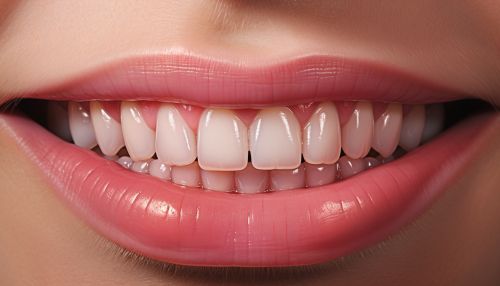Dentition
Overview
Dentition pertains to the development of teeth and their arrangement in the mouth. In mammalian species, the dentition is heterodont and diphyodont, meaning that they have different types of teeth (incisors, canines, premolars, and molars) and two successive sets of teeth, respectively. The first set, known as the deciduous or milk dentition, is replaced by a permanent dentition. The number, type, and morphology of teeth in a given species are collectively referred to as its dental formula.


Development of Teeth
Teeth develop from the embryonic tissues, the ectoderm and the mesenchyme. The process begins with the formation of a dental lamina, which gives rise to tooth buds. These buds differentiate into the enamel organ, dental papilla, and dental sac, which form the enamel, dentin, and cementum of the teeth, respectively. This process is regulated by various genetic and molecular factors.
Types of Teeth
Mammals have four types of teeth: incisors, canines, premolars, and molars. Each type has a specific function in the process of mastication. Incisors are used for cutting or shearing food into manageable pieces. Canines are used for holding, grasping, and tearing food. Premolars and molars are used for grinding and crushing food.
Dental Formula
The dental formula represents the number of each type of tooth in one half of the mouth. For example, the dental formula for humans is 2-1-2-3, meaning two incisors, one canine, two premolars, and three molars in each half of the mouth. The dental formula varies among different mammalian species.
Dental Diseases and Disorders
Various diseases and disorders can affect the dentition, including dental caries, periodontal disease, and malocclusion. Dental caries, or tooth decay, is caused by the demineralization of the tooth surface by acids produced by bacteria. Periodontal disease affects the gums and other structures supporting the teeth. Malocclusion refers to the misalignment of teeth and/or incorrect relation between the teeth of the two dental arches.
Dental Treatments
Dental treatments aim to prevent or treat dental diseases and disorders. They include dental fillings, root canal treatment, dental crowns, bridges, implants, orthodontic treatment, and periodontal treatment. Dental fillings and root canal treatment are used to treat dental caries. Dental crowns, bridges, and implants are used to replace missing teeth. Orthodontic treatment is used to correct malocclusion. Periodontal treatment is used to treat periodontal disease.
